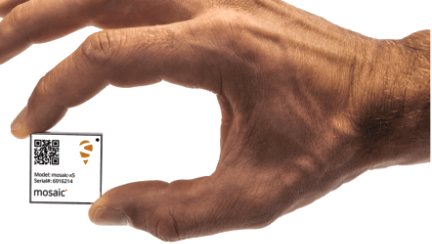
Septentrio, recently introduced two, new, open-source hardware projects that are now available to integrators of satellite-based positioning.

By expanding their ecosystem of open-source hardware and software Septentrio makes reliable GNSS* positioning even more accessible to integrators, developers and the DiY community. The new projects embed mosaic, a compact, high-precision, multi-frequency, GPS/GNSS receiver module known for its robust performance and resilience to jamming and spoofing**.

The first project, mosaicBus, is a reference design of a board compatible with mikroBUS™, one of the world’s fastest-growing add-on board standards primarily used in embedded systems.
MikroBUS enables easy plug-and-play sensor integration and is designed into development boards of major vendors including MikroElektronika, the company that developed the mikroBUS™ standard.

The second project, called mosaicAlto, is a carrier board embedding the mosaic-X5 or mosaic-H GNSS receivers, which transforms Arduino Pro “Portenta” into a single-board computer with a GPS/GNSS receiver.
The two new projects allow integrators to easily take advantage of the mosaic receiver for building-in a competitive edge into their systems. The mosaicBus board simplifies development and reduces time-to-market for integrators of applications such as automation, robotics or IoT. While Arduino is well known by the DIY community, Arduino Pro is the professional version of this popular electronics platform, targeting industrial and other disruptive professional applications such as agriculture and construction.

The mosaic module has been a popular choice for systems where accuracy and reliability are required. It has been widely adopted through existing projects such as the mosaicHAT a shield board for Raspberry Pi and Mowi a wireless communication board leveraging the mosaic receiver and the ESP32 module from Espressif Systems. In addition to hardware reference designs Septentrio also supports other ecosystems such as ROS as well as several popular UAV autopilots.
“At Septentrio we believe that integration of reliable high-accuracy positioning should be easy and accessible. That is why we are dedicated to supporting the open-source community and various ecosystems with a wide array of hardware and software tools.” — Gustavo Lopez, Market Access Manager, Septentrio.
* Global Navigation Satellite System including the American GPS, European Galileo, Russian GLONASS, Chinese BeiDou, Japan’s QZSS and India’s NavIC. These satellite constellations broadcast positioning information to receivers which use it to calculate their absolute position.
** Jamming is a form of radio interference which occurs when GPS frequency is overpowered by other radio waves, resulting in accuracy degradation or event total loss of position. Spoofing is a malicious form of radio interference, where misleading signals are sent into the receiver, resulting in faulty coordinates, which lead the target away from its predefined track.
